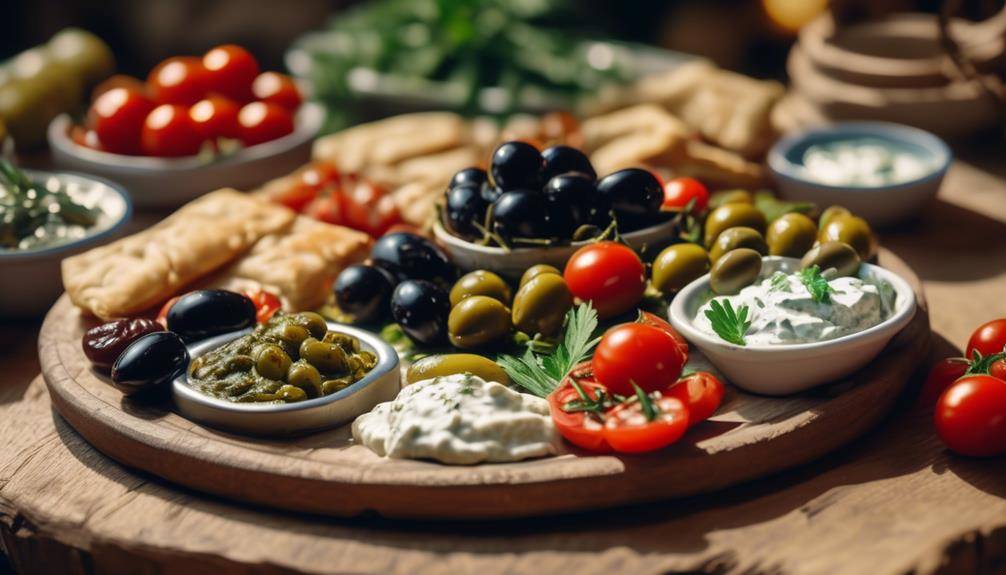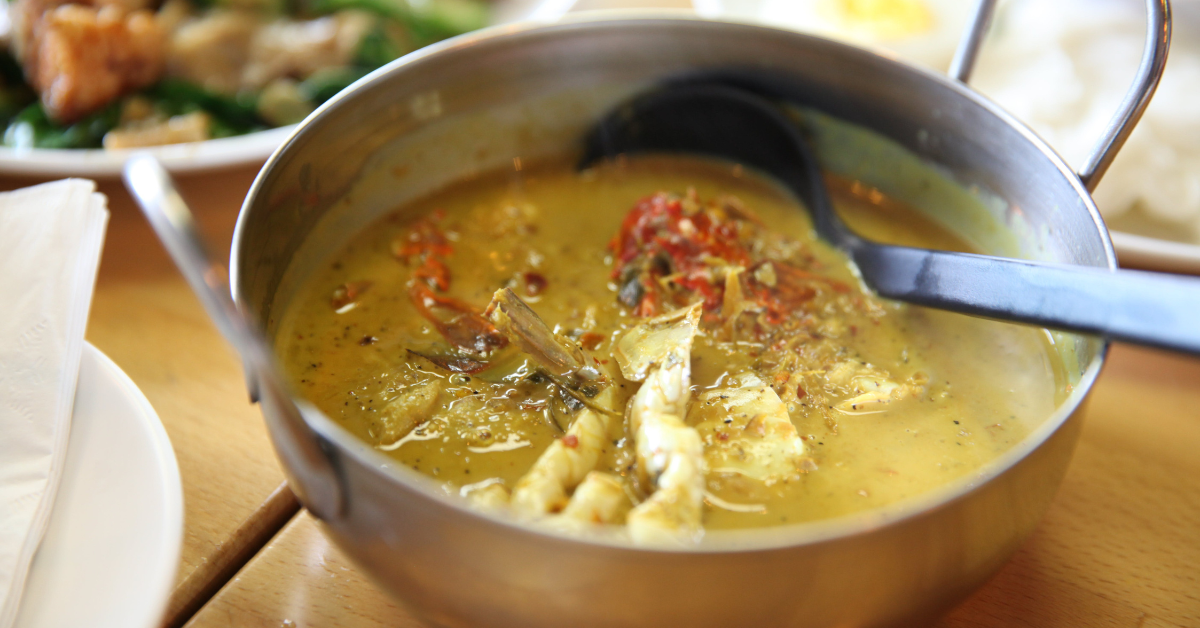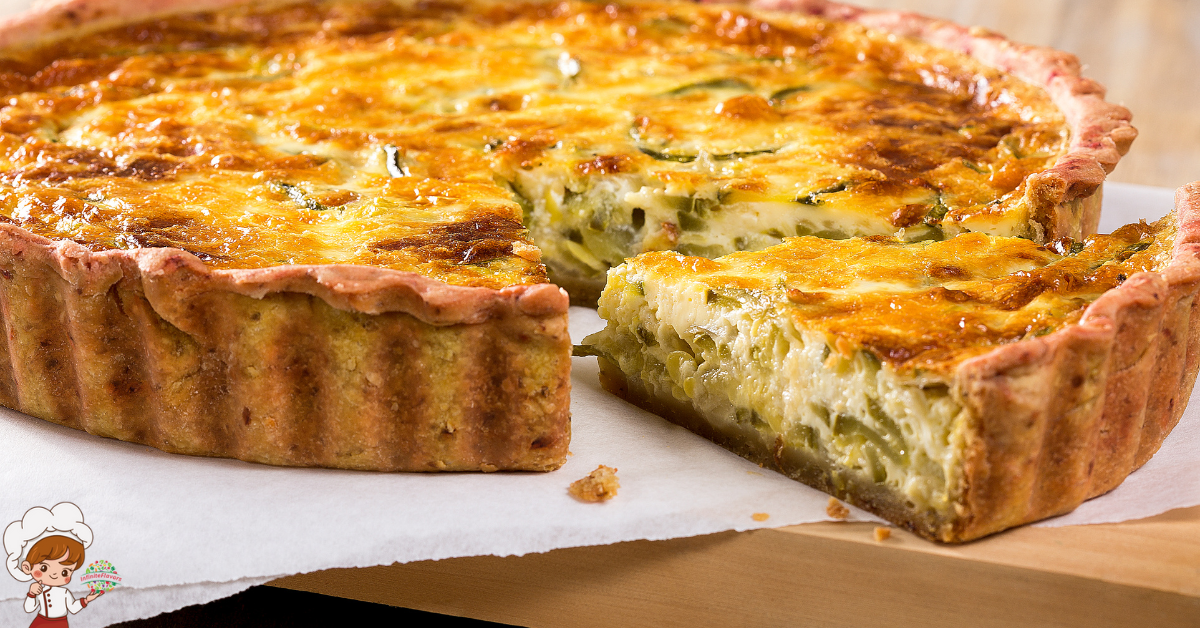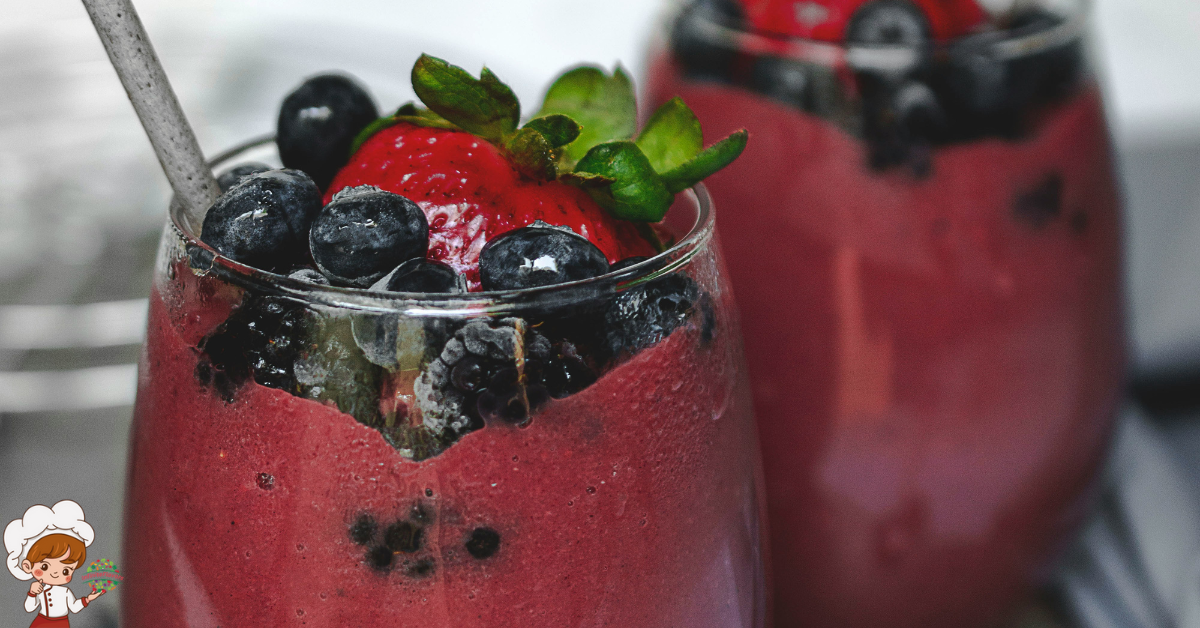The Best Vegetarian Greek Food Options

Vegetarian Greek Food Options; Are you a vegetarian looking for delectable Greek food options to satisfy your palate? Look no further, as Greek cuisine offers a plethora of mouthwatering vegetarian dishes that will transport you to the sunny shores of Greece. From Mezes, small bites of Greek vegetarian goodness, to Tzatziki, a refreshing yogurt and cucumber dip, the options are endless. But that’s not all! There are also Dolmades, Spanakopita, Moussaka, Revithia, Melitzanosalata, Taramasalata (with a vegetarian version available), and Loukoumades, irresistible Greek donuts drizzled with honey and cinnamon. So, get ready to embark on a culinary journey through the flavors of Greece and discover the diverse and delicious vegetarian options that await you.
Mezes: Small Bites of Greek Vegetarian Goodness
When exploring the world of Greek vegetarian cuisine, one cannot overlook the delightful array of mezes – small bites of Greek vegetarian goodness that are bursting with flavor and charm. Mezes are an essential part of Greek dining culture, often served as appetizers or snacks. These delectable morsels are not only delicious but also showcase the diverse cooking techniques and nutritional benefits of Greek vegetarian food.
One of the cooking techniques commonly used to prepare mezes is grilling. Vegetables like eggplant, zucchini, and peppers are marinated in olive oil, garlic, and herbs before being grilled to perfection. The grilling process adds a smoky flavor and enhances the natural sweetness of the vegetables. Another popular technique is baking, where ingredients like feta cheese, tomatoes, and olives are combined and baked until they become soft and creamy.
Mezes are not only a treat for the taste buds but also offer numerous nutritional benefits. Greek vegetarian cuisine emphasizes the use of fresh, seasonal ingredients, which are packed with vitamins, minerals, and antioxidants. Vegetables like tomatoes and peppers are rich in vitamin C, while olive oil provides healthy monounsaturated fats. The inclusion of legumes like chickpeas and lentils in mezes adds protein and fiber to the dish, making it a satisfying and balanced option.
Tzatziki: a Refreshing Yogurt and Cucumber Dip
After indulging in the delicious array of mezes, the next vegetarian Greek food option to explore is the refreshing yogurt and cucumber dip known as Tzatziki. Tzatziki is a staple in Greek cuisine and is loved for its tangy and cooling flavors. Made with thick Greek yogurt, grated cucumbers, garlic, and fresh herbs like dill or mint, this dip is a must-try for any vegetarian food lover.
One of the great things about Tzatziki is its versatility. There are many variations of this dip, each with its unique twist. Some recipes add lemon juice or vinegar for an extra zing, while others include grated carrots or chopped olives for added texture and flavor. You can even find Tzatziki with a hint of spice by adding a pinch of cayenne pepper or red pepper flakes.
Not only is Tzatziki delicious, but it also offers numerous health benefits. Greek yogurt is packed with protein, calcium, and probiotics, which are beneficial for digestion and gut health. Cucumbers are hydrating and rich in vitamins, while garlic is known for its immune-boosting properties. The combination of these ingredients makes Tzatziki a nutritious and refreshing addition to any meal.
Whether you’re using Tzatziki as a dip for pita bread or veggies, or as a sauce for falafel or gyros, it is sure to elevate your dining experience. Its creamy texture, combined with the fresh and vibrant flavors, makes it a perfect complement to any dish. So, next time you’re in the mood for some vegetarian Greek food, don’t forget to try the delightful Tzatziki.
Dolmades: Grape Leaves Stuffed With Rice and Herbs
To experience the delightful flavors and textures of Greek cuisine, look no further than dolmades, grape leaves stuffed with rice and herbs. Dolmades are a popular dish in Greek cuisine, known for their unique taste and beautiful presentation. The cooking techniques for dolmades involve carefully wrapping the rice and herb mixture in grape leaves and then cooking them to perfection.
The health benefits of dolmades are numerous. Firstly, grape leaves are a good source of fiber, which aids in digestion and helps maintain a healthy weight. Additionally, grape leaves are rich in vitamins A and K, as well as antioxidants, which boost the immune system and protect against chronic diseases. The rice filling provides carbohydrates for energy, while the herbs, such as dill and mint, add flavor and provide essential nutrients.
When preparing dolmades, it is important to select fresh and tender grape leaves. The leaves should be blanched briefly in boiling water to soften them before filling. The rice mixture, typically made with long-grain rice, onions, and herbs, is then placed in the center of each leaf and rolled tightly to form a small package. The dolmades are then cooked by steaming or simmering in a flavorful broth until the rice is tender and the flavors have melded together.
Dolmades can be enjoyed as a main dish or as an appetizer. They are often served with a side of tzatziki, a refreshing yogurt and cucumber dip, to complement their flavors. Whether you are a vegetarian or simply looking to incorporate more plant-based meals into your diet, dolmades are a delicious and nutritious option that will transport you to the vibrant streets of Greece.
Spanakopita: Flaky Phyllo Pastry Filled With Spinach and Feta
Get ready to indulge in the deliciousness of spanakopita, a Greek pastry that combines flaky phyllo dough with a rich filling of spinach and feta cheese. This traditional dish is a perfect balance of flavors and textures, with the crispness of the pastry complementing the creamy and savory filling. The key ingredients for spanakopita include spinach, feta cheese, phyllo dough, and a few additional seasonings for added taste.
Ingredients for Spanakopita
Using a combination of vibrant greens and savory cheese, the essential ingredients for Spanakopita come together to create a flaky, mouthwatering pastry filled with spinach and feta. Spanakopita is known for its delicious taste and satisfying texture. The main ingredient, spinach, is packed with nutrients, including vitamins A, C, and K, as well as iron and fiber. Feta cheese adds a tangy and salty flavor that complements the spinach perfectly.
Other ingredients that contribute to the rich taste of Spanakopita include onions, garlic, dill, and olive oil. The cooking technique of layering the phyllo pastry sheets with the spinach and cheese filling creates a delicate and crispy crust that encases the flavorful filling. Spanakopita is not only a tasty dish but also a nutritious one, making it a wonderful option for vegetarians and anyone looking for a delicious Greek dish.
Cooking Instructions for Spanakopita
For a delicious and satisfying Spanakopita, follow these simple cooking instructions to create a flaky phyllo pastry filled with spinach and feta.
- Preheat your oven to 375°F and line a baking sheet with parchment paper.
- In a large skillet, heat olive oil over medium heat and sauté onions and garlic until translucent.
- Add fresh spinach to the skillet and cook until wilted. Remove from heat and let it cool.
- In a mixing bowl, combine the cooled spinach, crumbled feta cheese, beaten eggs, and a pinch of salt and pepper.
- Lay out a sheet of phyllo pastry and brush it with melted butter. Repeat this step, layering 4-5 sheets of phyllo.
- Spoon the spinach mixture onto the phyllo layers, and fold the pastry into a triangle shape.
- Brush the top with more melted butter and bake in the preheated oven for 25-30 minutes, or until golden brown and crispy.
Cooking Techniques:
- Brushing the phyllo pastry with melted butter ensures a crisp and golden crust.
- Folding the pastry into a triangle shape adds an appealing visual element to the dish.
Flavor Variations:
- Add a touch of lemon zest to the spinach mixture for a refreshing twist.
- Sprinkle some crushed red pepper flakes for a hint of heat to complement the savory flavors.
Serving Suggestions for Spanakopita
To enhance your dining experience with Spanakopita, consider these serving suggestions that will complement the flavors of the flaky phyllo pastry filled with spinach and feta. One delicious option is to serve Spanakopita alongside a refreshing Greek salad. The crispness of the salad, with its juicy tomatoes, crunchy cucumbers, tangy olives, and creamy feta cheese, provides a perfect contrast to the rich and savory Spanakopita. You can also add some dolmades, which are stuffed grape leaves, to the platter for added variety and flavor.
Another serving suggestion is to pair Spanakopita with tzatziki sauce. The cool and creamy yogurt sauce, flavored with garlic, cucumber, and dill, adds a refreshing and tangy element that complements the warm and flaky pastry. Whether you choose to serve it with a Greek salad or tzatziki sauce, these serving suggestions will elevate your Spanakopita to a whole new level of deliciousness.
Moussaka: a Layered Eggplant and Potato Casserole
Moussaka, a delectable layered casserole featuring eggplant and potato, is a Greek dish that tantalizes the taste buds with its rich flavors and hearty textures. This iconic Greek recipe holds significant cultural significance and is prepared using unique cooking techniques that enhance its taste and presentation.
The preparation of moussaka involves layering thinly sliced eggplant and potatoes, which are then topped with a flavorful tomato sauce. The dish is then baked to perfection, allowing the flavors to meld together and create a mouthwatering symphony of taste. The combination of creamy béchamel sauce, tender vegetables, and savory spices makes every bite a delight for the senses.
To truly understand the cultural significance of moussaka, it is important to appreciate the history behind the dish. Originating in the Middle East, moussaka made its way to Greece and became a beloved staple of Greek cuisine. It is often served during special occasions and family gatherings, symbolizing unity and togetherness. The dish embodies the warmth and hospitality for which Greek culture is renowned.
The aroma of the spices used in moussaka, such as cinnamon and nutmeg, evokes a sense of comfort and nostalgia. Each layer of eggplant and potato, carefully seasoned and cooked to perfection, contributes to the overall flavor profile of the dish. The creamy béchamel sauce adds a luxurious touch, creating a velvety texture that melts in your mouth.
As you savor every bite of moussaka, you can’t help but appreciate the skill and technique required to create such a masterpiece. The careful layering, precise cooking times, and attention to detail all contribute to the success of this traditional Greek dish. Moussaka is more than just a casserole; it is a culinary work of art that embodies the essence of Greek cuisine.
Greek Salad: a Classic Combination of Fresh Vegetables and Feta Cheese
Greek Salad is a beloved dish known for its refreshing combination of fresh vegetables and tangy feta cheese. The classic ingredients of a Greek Salad include tomatoes, cucumbers, red onions, bell peppers, Kalamata olives, and a generous amount of crumbled feta cheese. However, variations of this salad can be found throughout Greece and may include additional ingredients such as capers, fresh herbs, or even grilled vegetables.
Ingredients for Greek Salad
A collection of vibrant, fresh vegetables, combined with tangy feta cheese, forms the foundation of the beloved Greek salad. This classic dish is not only delicious but also packed with health benefits. The vegetables in a Greek salad are typically sliced or chopped, allowing for maximum flavor and texture. Here are some cooking tips to enhance your Greek salad experience:
- Use ripe tomatoes for a burst of sweetness
- Crisp cucumbers add a refreshing crunch
- Red onions provide a hint of sharpness
- Kalamata olives bring a briny, savory element
Now, let’s explore the health benefits of these ingredients:
- Tomatoes are rich in antioxidants and vitamin C
- Cucumbers are hydrating and low in calories
- Red onions contain compounds that may lower blood pressure
- Kalamata olives are a good source of healthy fats
Variations of Greek Salad
For a delightful twist on the classic combination of fresh vegetables and feta cheese, explore the various creative variations of Greek salad. Greek salad is not only a delicious and refreshing dish, but it also offers numerous nutritional benefits. One popular variation of Greek salad is the addition of grilled vegetables, such as zucchini, eggplant, and bell peppers. This adds a smoky flavor and a delightful char to the salad, enhancing its overall taste. Another variation is the use of different types of lettuce, such as romaine or arugula, to give the salad a unique texture and flavor profile.
Additionally, some people like to add protein-rich ingredients like chickpeas or grilled tofu to make the salad more filling and satisfying. These variations not only provide different taste experiences but also increase the nutritional value of Greek salad by adding more vitamins, minerals, and fiber to the dish.
Gigantes Plaki: Baked Giant Beans in a Rich Tomato Sauce
Baked to perfection, Gigantes Plaki is a mouthwatering dish featuring giant beans smothered in a rich tomato sauce. This traditional Greek recipe showcases the country’s cooking techniques and holds cultural significance. Here’s why Gigantes Plaki will leave you craving for more:
- Comforting and satisfying: The combination of tender giant beans and the hearty tomato sauce creates a dish that is both comforting and satisfying. With each bite, you’ll experience a burst of flavors that will warm your soul and leave you feeling content.
- Creamy yet tangy: The giant beans are cooked until they become soft and creamy, absorbing the flavors of the tomato sauce. The sauce itself is made with ripe tomatoes, garlic, onions, and aromatic herbs, resulting in a tangy and robust taste that complements the beans perfectly.
- Aromatic and flavorful: The aroma that fills the kitchen as Gigantes Plaki bakes in the oven is simply irresistible. The slow cooking process allows the flavors to meld together, creating a dish that is bursting with savory and aromatic notes. The combination of herbs like oregano, thyme, and parsley adds depth and complexity to the overall taste.
The cultural significance of Gigantes Plaki cannot be overlooked. This dish has been passed down through generations in Greek households, representing the rich culinary traditions of the country. It is often enjoyed as a main course or as part of a mezze platter, showcasing the importance of communal dining and sharing food with loved ones.
Fava: Creamy Yellow Split Pea Puree
After savoring the comforting and satisfying Gigantes Plaki, you’ll be delighted to explore another vegetarian Greek dish that will surely tantalize your taste buds – the creamy Yellow Split Pea Puree known as Fava. Fava is not only a traditional Greek dish but also a nutritious choice for those seeking a healthy and flavorful meal.
Made from yellow split peas, Fava is a versatile dish that can be enjoyed as a dip or a spread. The peas are cooked until soft and then pureed to create a smooth and creamy texture. Fava is typically seasoned with olive oil, lemon juice, and garlic, adding a tangy and zesty flavor to the dish.
One of the main health benefits of Fava lies in its high protein content. Split peas are a great source of plant-based protein, making Fava an excellent option for vegetarians and vegans. Additionally, the dish is rich in dietary fiber, which aids in digestion and helps to keep you feeling full and satisfied.
Fava is also packed with essential vitamins and minerals. It is a good source of iron, which is important for the production of red blood cells and the prevention of anemia. The dish is also high in potassium, which helps to regulate blood pressure and maintain a healthy heart.
In Greek cuisine, Fava is often served as a meze, or appetizer, alongside other traditional dishes. It is commonly enjoyed with pita bread or crusty bread, providing a delightful combination of textures and flavors.
Gemista: Stuffed Vegetables With Rice and Aromatic Herbs
If you’re looking for a flavorful and satisfying vegetarian Greek dish, look no further than Gemista: Stuffed Vegetables With Rice and Aromatic Herbs. Gemista is a traditional Greek recipe that will transport you to the sunny Mediterranean with its vibrant flavors and aromatic herbs. Here is a gemista recipe that will have you craving for more:
- Ingredients:
- Assorted vegetables such as bell peppers, tomatoes, zucchini, and eggplant
- Rice
- Onion
- Garlic
- Fresh herbs like parsley and dill
- Olive oil
- Salt and pepper
- Preparation:
- Preheat the oven to 375°F (190°C).
- Cut the tops off the vegetables and hollow them out, removing the seeds and pulp.
- In a pan, sauté chopped onion and garlic in olive oil until translucent.
- Add rice, fresh herbs, salt, and pepper to the pan and cook until the rice is partially cooked.
- Stuff the vegetables with the rice mixture and place them in a baking dish.
- Drizzle olive oil over the vegetables and cover the dish with aluminum foil.
- Bake for about 45 minutes or until the vegetables are tender and the rice is fully cooked.
Gemista not only satisfies your taste buds but also offers several health benefits. Here are some of the benefits of including gemista in your diet:
- Rich in vitamins and minerals: Gemista is packed with vitamins A, C, and K, as well as minerals like potassium and magnesium.
- High in fiber: The combination of vegetables and rice in gemista provides a good amount of dietary fiber, aiding in digestion and promoting a healthy gut.
- Antioxidants: The colorful assortment of vegetables used in gemista contains antioxidants that help protect the body against harmful free radicals.
Whether you’re a vegetarian or simply looking to explore the flavors of Greek cuisine, gemista is a must-try dish that will leave you feeling satisfied and nourished.
Briam: Roasted Mixed Vegetables With Olive Oil and Herbs
To create a mouthwatering dish of Briam, roasted mixed vegetables with olive oil and herbs, you’ll need to gather a variety of fresh vegetables and prepare them with a flavorful combination of olive oil and aromatic herbs. Briam is a traditional Greek dish that is not only delicious but also packed with health benefits. The beauty of Briam lies in its simplicity and versatility, making it a perfect addition to any vegetarian meal.
The basic recipe for Briam calls for a selection of vegetables such as tomatoes, zucchini, eggplant, bell peppers, onions, and potatoes. However, there are also numerous variations of this dish that incorporate different vegetables to suit individual tastes. Some popular alternatives include adding carrots, green beans, or even artichokes. The key is to choose vegetables that are in season and have a harmonious flavor profile.
Roasting the vegetables in olive oil brings out their natural sweetness and enhances their flavors. Olive oil is not only a heart-healthy fat but also adds a rich and smooth texture to the dish. The aromatic herbs, such as oregano, thyme, and rosemary, provide a delightful fragrance and infuse the vegetables with a Mediterranean flair.
Aside from its delicious taste, Briam offers a wide range of health benefits. Roasting vegetables helps retain their nutrients while intensifying their flavors. The high fiber content of vegetables aids digestion and promotes a healthy gut. Additionally, the antioxidants found in vegetables can help reduce the risk of chronic diseases, including heart disease and certain types of cancer.
Revithia: Greek Chickpea Soup With a Twist
Revithia, a traditional Greek chickpea soup, offers a unique twist to your vegetarian Greek food options. Packed with nutritional benefits and flavorful Greek ingredients, this soup is a delightful combination of creamy chickpeas, aromatic herbs, and tangy lemon juice. It is a hearty and satisfying dish that not only nourishes your body but also tantalizes your taste buds with its rich and comforting flavors.
Nutritional Benefits
With its unique twist on a traditional Greek dish, Revithia, a chickpea soup, offers a host of nutritional benefits that make it a must-try option for vegetarians. This delicious soup is not only packed with flavor but also provides numerous health benefits and nutrient-rich options. Here’s why you should consider adding Revithia to your vegetarian Greek food repertoire:
- Health benefits
- High in fiber: Revithia is made with chickpeas, which are an excellent source of dietary fiber. Fiber aids digestion, promotes satiety, and helps maintain a healthy weight.
- Rich in protein: Chickpeas are a great plant-based protein source, making Revithia a satisfying and nutritious option for vegetarians.
- Nutrient-rich options
- Abundance of vitamins and minerals: Revithia contains essential nutrients like iron, folate, magnesium, and vitamin B6, which are vital for overall health and well-being.
- Antioxidant powerhouse: The ingredients in Revithia, such as garlic, onions, and olive oil, are rich in antioxidants that protect against oxidative stress and inflammation.
Flavorful Greek Ingredients
As you explore the flavorful Greek ingredients, prepare to embark on a culinary journey with Revithia, a twist on a traditional Greek dish featuring the vibrant flavors of chickpea soup. Greek cuisine is known for its bold and robust flavors, and this dish is no exception. Revithia is made with simple yet flavorful ingredients such as chickpeas, onions, garlic, and olive oil. The combination of these ingredients creates a rich and hearty soup that is both satisfying and nutritious.
Chickpeas, a staple in Greek cuisine, are packed with protein and fiber, making them a perfect addition to a vegetarian Greek mezze. The flavors of Revithia are further enhanced by the addition of aromatic herbs and spices such as rosemary, thyme, and lemon zest. This dish is a true celebration of the diverse and flavorful Greek ingredients that are the backbone of Mediterranean cuisine.
Melitzanosalata: Smoky Eggplant Dip Bursting With Flavor
Indulge in the rich and smoky flavors of Melitzanosalata, a mouthwatering eggplant dip that will leave you craving for more. This traditional Greek dish is a culinary delight that combines the earthy taste of roasted eggplant with a medley of vibrant herbs and spices. With its velvety texture and robust flavor profile, Melitzanosalata is a versatile dip that can be enjoyed with pita bread, crackers, or as a spread on sandwiches.
When you take a bite of this delectable dip, you’ll be transported to the sun-drenched shores of Greece, where the flavors of the Mediterranean come alive. Here are two reasons why Melitzanosalata is a must-try:
- Melitzanosalata Variations: While the classic recipe features roasted eggplant, garlic, lemon juice, and olive oil, there are countless variations of this dip that incorporate additional ingredients to enhance its taste. Some variations include the addition of roasted red peppers, feta cheese, or even walnuts for a delightful crunch. These variations add a unique twist to the dip, allowing you to explore different flavor combinations and find your favorite.
- Health Benefits of Eggplant: Not only is Melitzanosalata a flavorful delight, but it also offers numerous health benefits. Eggplants are a rich source of dietary fiber, vitamins, and minerals. They are low in calories and high in antioxidants, which can help protect against chronic diseases and promote overall well-being. By indulging in Melitzanosalata, you can enjoy a delicious snack while nourishing your body with essential nutrients.
Taramasalata: Creamy Fish Roe Dip (Vegetarian Version Available)
If you’re looking for a creamy and flavorful dip to add to your Greek vegetarian mezze spread, Taramasalata is a great option to consider. Traditionally made with fish roe, there is also a vegetarian version available for those who prefer a plant-based option. This dip is known for its rich and smooth texture, and it pairs perfectly with pita bread or fresh vegetables.
Vegan Taramasalata Recipe
To create a delicious vegan version of Taramasalata, a creamy fish roe dip, follow this simple recipe:
- Ingredients:
- 1 cup of cooked white beans
- 2 tablespoons of seaweed flakes
- 1 tablespoon of lemon juice
- 1 clove of garlic, minced
- 2 tablespoons of olive oil
- Salt and pepper to taste
- Instructions:
- In a food processor, blend the white beans until smooth.
- Add the seaweed flakes, lemon juice, garlic, olive oil, salt, and pepper, and blend until well combined.
- Taste and adjust the seasoning if needed.
- Transfer the dip to a bowl and refrigerate for at least 30 minutes to allow the flavors to meld together.
- Serve the vegan Taramasalata with pita bread or fresh vegetables for dipping.
Greek Vegetarian Dips
Now let’s explore the world of Greek vegetarian dips, including the beloved Taramasalata, which has a delicious vegetarian version available. Greek cuisine is known for its wide range of flavorful dips, or mezes varieties, and there are plenty of options for those following a vegetarian diet. One popular dip is tzatziki, traditionally made with yogurt, cucumber, garlic, and herbs. However, there are also vegetarian tzatziki alternatives that use plant-based yogurts or creamy cashew bases. These alternatives still offer the tangy and refreshing flavors of the original dip. Whether you’re a vegetarian or simply looking to try something new, Greek vegetarian dips are a fantastic addition to any meze spread.
Plant-Based Greek Mezze
Dive into the world of plant-based Greek mezze with the creamy and flavorful Taramasalata, a traditional fish roe dip that also has a delicious vegetarian version available. This versatile dip is a staple in Greek cuisine and is perfect for spreading on warm pita bread or using as a dip for fresh vegetables. Here are two reasons why Taramasalata is a must-try plant-based Greek mezze:
- Creamy and Rich: The texture of Taramasalata is smooth and velvety, with a rich and creamy flavor that is both satisfying and indulgent. Even without the fish roe, the vegetarian version is just as delicious, thanks to the combination of ingredients like olive oil, lemon juice, and garlic.
- Burst of Flavor: Taramasalata is bursting with flavors that will transport you to the sunny shores of Greece. The tanginess of lemon, the earthiness of olive oil, and the subtle hint of garlic all come together to create a dip that is both refreshing and savory.
Try this plant-based Greek mezze at your next gathering and impress your friends with its creamy texture and delightful taste.
Loukoumades: Irresistible Greek Donuts Drizzled With Honey and Cinnamon
Indulge in the delectable delight of Loukoumades, heavenly Greek donuts drenched in a luscious combination of honey and cinnamon. Loukoumades, also known as Greek honey balls, are a popular traditional Greek dessert that has been enjoyed for centuries. These small, golden, deep-fried dough balls are crispy on the outside and soft on the inside, making them a truly irresistible treat.
Cooking Loukoumades requires a few essential tips to ensure a perfect result. First, the dough should be made with yeast, allowing it to rise and create a light and fluffy texture. The dough should be mixed until it becomes elastic and smooth. Once the dough has risen, it is shaped into small balls and deep-fried until golden brown. The key is to maintain a consistent temperature while frying to ensure even cooking. After frying, the Loukoumades are drained and then coated in a generous amount of honey and sprinkled with cinnamon, creating a heavenly combination of flavors.
The origins of Loukoumades can be traced back to ancient Greece, where they were offered as a sacred food to the gods. They were also a popular treat during festivals and celebrations. Today, Loukoumades are enjoyed all year round and are often served as a dessert or a sweet snack. Their popularity has spread beyond Greece, and they can now be found in various Mediterranean and Middle Eastern cuisines.
Loukoumades are a delightful indulgence that showcases the rich culinary heritage of Greece. Their crispy exterior, soft interior, and the sweet drizzle of honey and sprinkling of cinnamon create a harmonious blend of flavors and textures. Whether enjoyed as a dessert after a Greek meal or as a sweet treat on its own, Loukoumades are a must-try for anyone looking to experience the authentic taste of Greek cuisine.
Vegetarian Greek Food Options; Frequently Asked Questions
Can You Provide a Recipe for Making Tzatziki at Home?
You can make tzatziki at home by combining Greek yogurt, cucumber, garlic, lemon juice, and dill. It’s not only delicious, but also has health benefits like being low in calories and high in protein. There are also variations of tzatziki recipes, such as adding mint or using sour cream instead of yogurt.
Are Dolmades Typically Served Hot or Cold?
Dolmades can be served hot or cold, depending on personal preference. Incorporating dolmades in a vegetarian diet provides health benefits, as they are packed with nutrients and fiber. Various Mediterranean cuisines have their own unique twists on dolmades.
What Other Vegetables Are Commonly Used in Gemista Besides Rice?
Gemista is a traditional Greek dish that consists of vegetables stuffed with rice, herbs, and various other vegetables. The different vegetable stuffing variations provide a variety of flavors and textures. Additionally, the ingredients used in gemista are packed with health benefits.
Can You Suggest a Vegetarian Alternative to Taramasalata?
Can’t find a vegetarian alternative to taramasalata? No worries! Greek cuisine has a wide range of vegetarian Greek dips and mezze dishes that you can enjoy. Let me suggest a few tasty options for you.
Are Loukoumades Usually Vegan-Friendly?
Loukoumades are usually not vegan-friendly because they contain eggs and milk. However, there are gluten-free options available for those with dietary restrictions. Some traditional toppings for loukoumades include honey, cinnamon, and crushed nuts.
Conclusion
In conclusion, Greek cuisine offers a plethora of delicious vegetarian options that are bursting with flavor. From mezes like tzatziki and dolmades to hearty dishes like moussaka and revithia, there is something to satisfy every vegetarian palate. Don’t miss out on the smoky eggplant dip, melitzanosalata, or the creamy taramasalata (vegetarian version available). And for a sweet treat, indulge in loukoumades, Greek donuts drizzled with honey and cinnamon. Explore the vibrant world of vegetarian Greek food and delight in its rich flavors.








